control of
chestnut canker
Cryphonectria parasitica is the fungus responsible for the disease known as chestnut blight. Currently, it affects all stands of European chestnut (Castanea sativa) in the north of the peninsula.
This fungus penetrates through open wounds in the tree (pruning, cracks, scars…), remains in the dead wood and is very resistant to cold and weather conditions. adverse. It is considered the most serious chestnut disease worldwide, and it is not for nothing that it is included in both European and Spanish legislation as a quarantine disease due to its aggressiveness, since it quickly colonizes the host
Plague symptoms
Damage and diagnostic items
1 .
Bark in reddish tones and swollen
Fissured bark in the central parts of the chancre
2 .
3 .
Red-orange pustules on the affected part of the cortex
Fan-shaped white mycelium under the outer part of the bark
4 .
5 .
Sprouts below the infection, more visible in summer due to the development of the foliage
Dry leaves or branches belonging to the infected part of the trunk and protruding from leafy stems in summer
6 .
Disease cycle
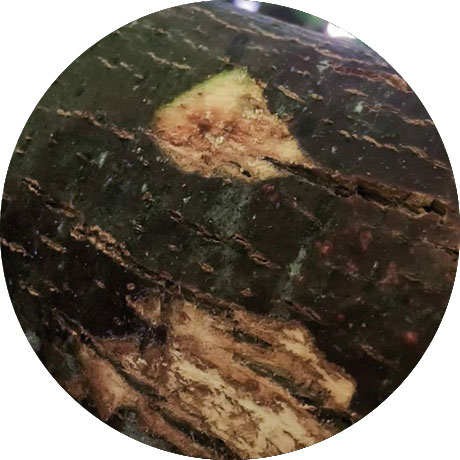
1. PENETRATION
The infection process of C. parasitica begins when spores penetrate the chestnut bark through natural openings or wounds. The fungus is incapable of infecting healthy tissues, so it only penetrates those chestnut trees that have pruning wounds, cracks or scars.
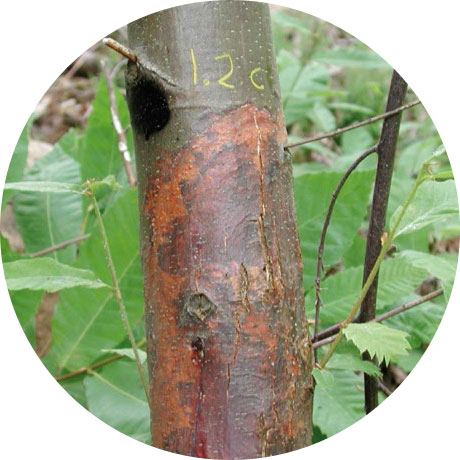
2. INFECTION
The fungus invades the subcortical zone, degrading the tissues and oppressing the sap and water ducts towards the upper parts of the tree. Therefore, the first symptom will be reddening and a slight bulge of the crust, more evident in young feet with smoother crusts.
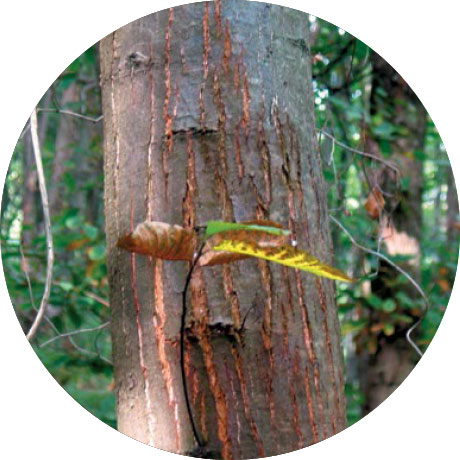
3. SYMPTOMS
It causes longitudinal cracks and splits in the affected area, wilting of leaves and branches, general decay of the tree, and formation of long-dormant buds just below the canker .
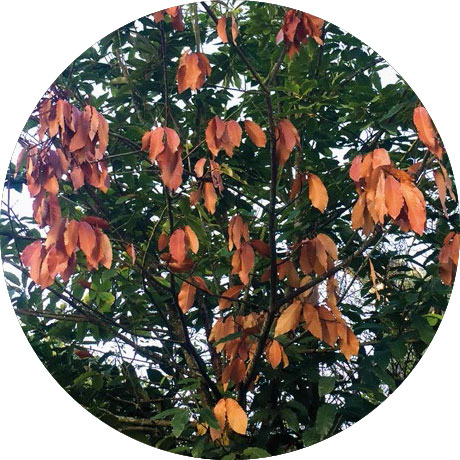
4. DRY AND DEATH
The affected part of the plant undergoes a process of necrosis, which is detected by the appearance of dry branches from the lesion. Progressively, the cankers increase in size and surround branches and trunks. When this happens, the plant tissues located above the lesion end up dying.
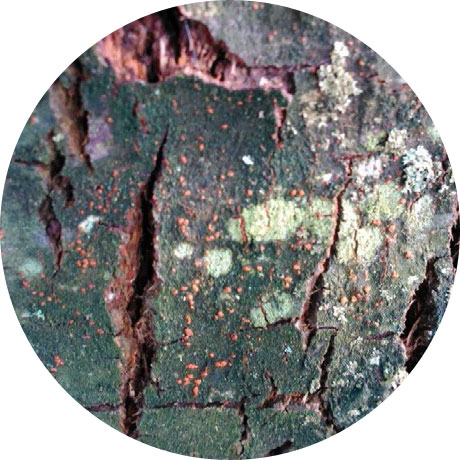
5. DISPERSION
The main agent of propagation of C. parasitica is the wind, which can carry the ascospores great distances. The conidia, however, do not present aerial dispersion, as they are encompassed in a viscous substance, and are transported by rain or on the legs, feathers, hair, etc., of small animals and insects.
Control methods
At present there is no method of cultural or chemical control that is effective, nor is there any chestnut cultivar or hybrid that is tolerant or resistant to the disease.
In 1953, Biraghi discovered the existence, for the first time in Italy, of non-pathogenic strains of C. parasitica that caused spontaneous healing of the lesions or chancres. In 1965, Grente verified that these strains, called hypovirulent, were not only less pathogenic than normal virulent strains, but that they could also transmit their effect to virulent ones.
Hypovirulence is defined as an attenuation of pathogen virulence caused by infection of the fungus by a double-stranded RNA virus that is transmitted by hyphal-conidial anastomoses , being the virus responsible for hypovirulence in Europe the so-called CHV1 (Cryphonectria hypovirus 1).
Assessment of CHV1 hypovirus transmission by dual cultures: < /b>in the plates on the left, the hypovirus was not transmitted to the pathogenic strains, while in those on the right, correct transmission was achieved.
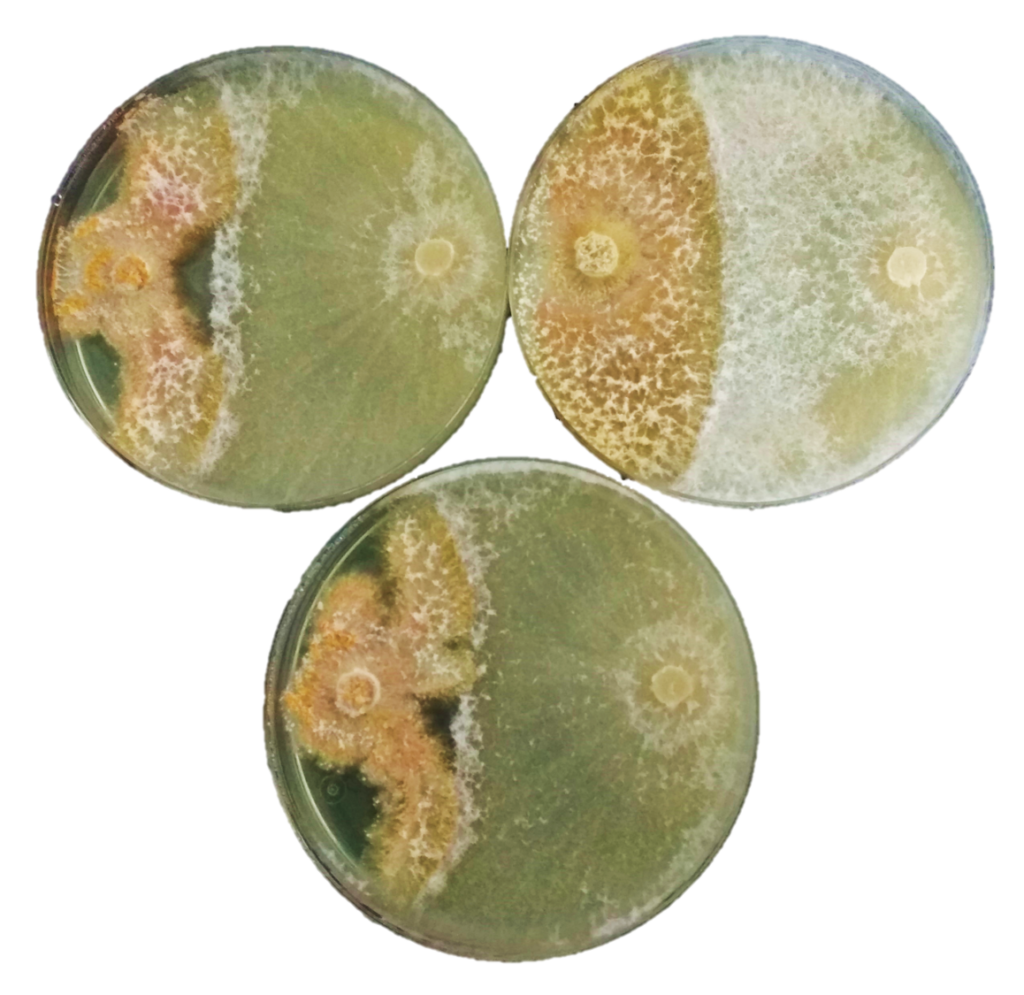
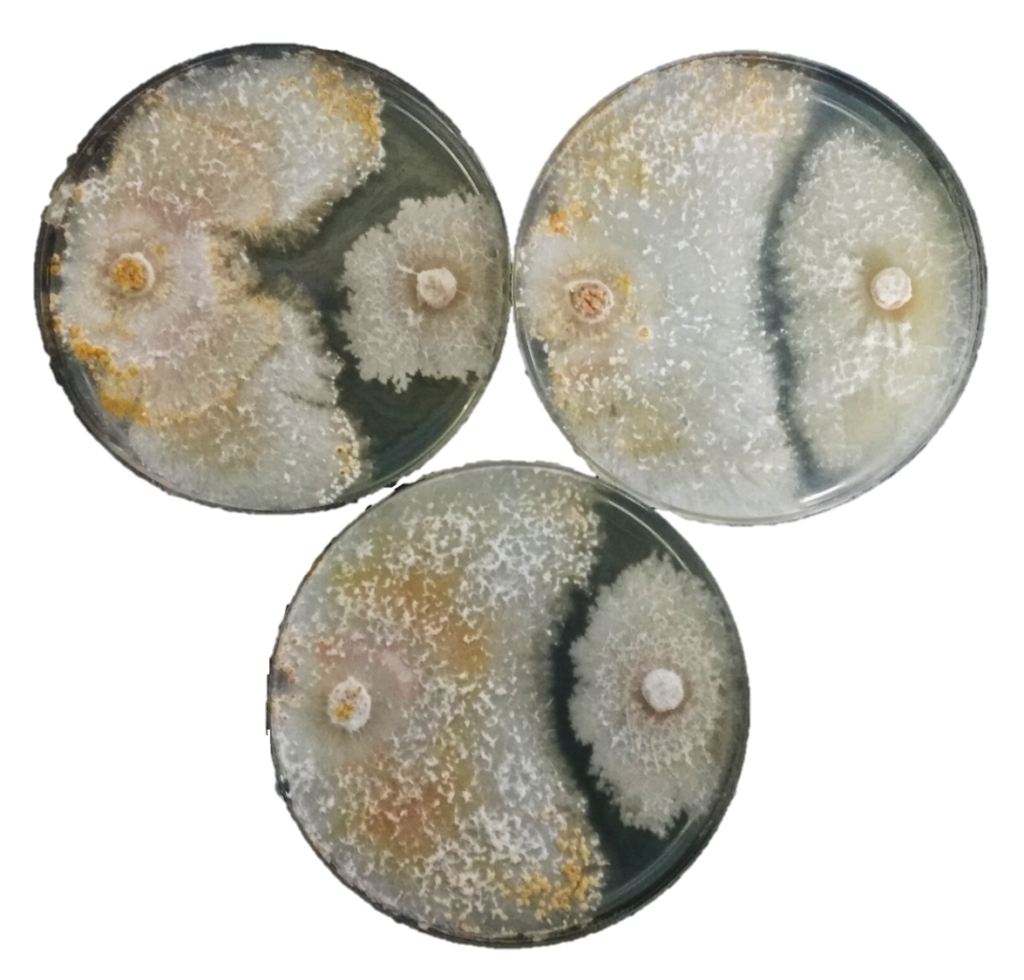
Precautionary measures
In Galicia there are eight types of disease-causing virulent Cryphonectria parasitica populations, of which three populations are the origin of 80 % of Galician cankers. For biological control to work successfully, it is recommended to use hypovirulent strains located in the same area where the control is applied.
Based on this natural process, a biological control method has been developed for the treatment of canker that consists of the inoculation of hypovirulent strains in trees that have virulent strains that cause of disease. This inoculation is carried out by applying a gel that contains hypovirulent strains compatible with the populations of the fungus that cause the disease in Galicia.

